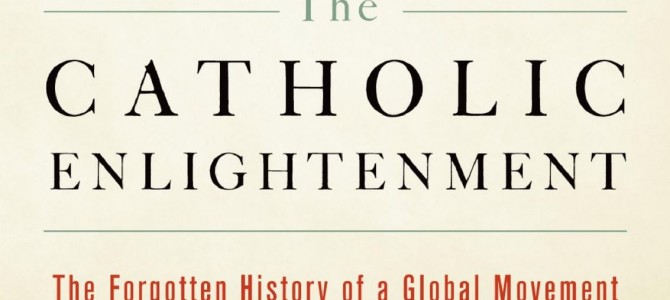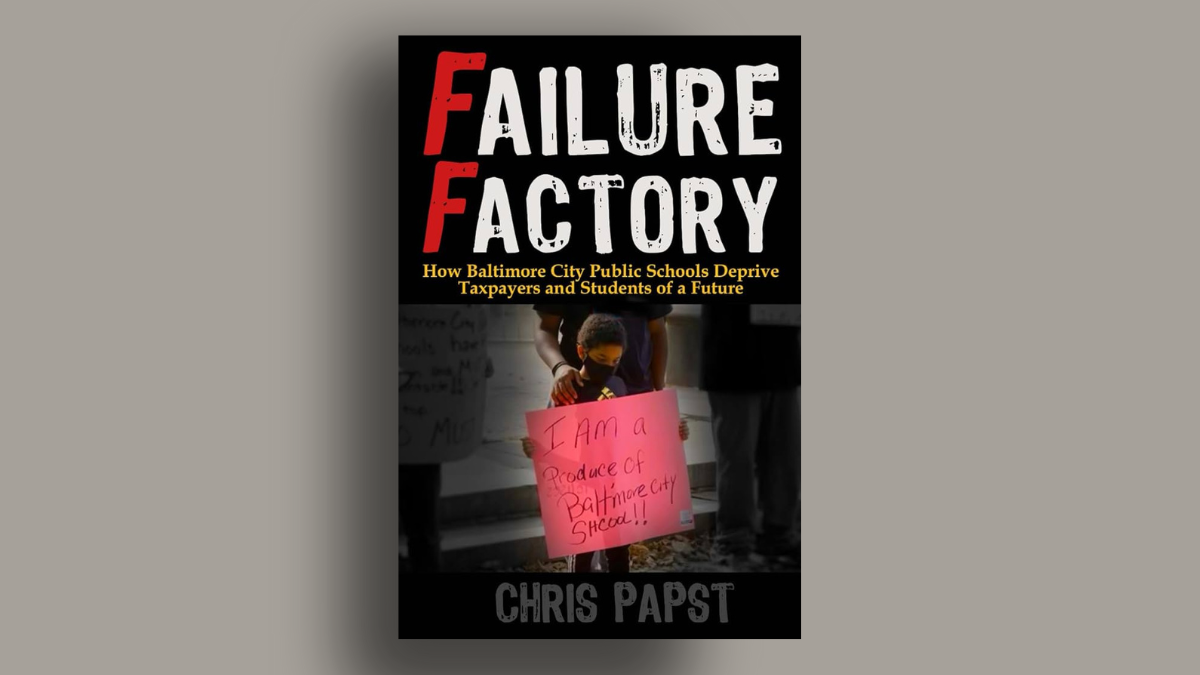
The traditional story of the Enlightenment is one of Europe finally casting off the darkness of medieval religious superstition and moving into the light of modernity. Led by philosophers such as Voltaire, who vowed to “écrasez l’infâme” or “crush the infamous,” and outright atheists such as Diderot, the new thinkers were finally free of the need to even pretend that any of the old hokum was true. During the Renaissance and early Scientific Revolution, intellectuals had to accede to religion. These new deists, skeptics, and non-believers were then free to work unencumbered toward the betterment of mankind in this world.
But as Uhlich L. Lehrner’s new book The Catholic Enlightenment: The Forgotten History of a Global Movement makes clear, this is far from the whole story. Firstly, you can’t have leaders without followers—and most of those following Voltaire were Catholics. While the Enlightenment in Protestant England was a phenomenon to which the whole world, and Americans in particular, owes attention, on the Continent the Enlightenment’s center of gravity was in Catholic lands—particularly France and the Habsburg Empire.
Even more significantly, many of the leading Continental Enlightenment figures not named Voltaire or Diderot were confessing Catholics. These included Voltaire’s friend, the Catholic priest, scientist, and philosopher Francois Jacquier, and Fernando Galiani, a libertine who struggled with his faith while debating the existence of God with his friend Diderot in Paris salons. There were the English Catholic priests who in 1745 founded the Society of St. Edmund from exile in Paris as a rival to the Royal Society in London. Benito Feijoo, a Spanish Benedictine monk, exercised influence in almost every Enlightenment-era cultural war, from the rights of women to free speech to scientific inquiry.
Catholic female writers such as Josefa Amar and Madame Leprince—better known today as the author of The Beauty and the Beast—issued faith-based defenses of the rights of women. The Brazilian priest Ribeiro Rocha, the French Constitutionalist Bishop Henri Gregoire, and the elected King of Corsica Theodore von Neuhoff all made important contributions to the anti-slavery movement that were rooted in Catholicism. In issues great and small, both the foot-soldiers and generals of the Enlightenment were often Roman Catholic clergy or devout laypeople.
Obscured, But Not Obscure
This is not to say that eighteenth-century Catholicism got slavery—or equality between the sexes, economics, or censorship—right. As with Deists and Protestants, there were Catholic advocates on both sides of each issue, and those identified with what we’d now see as the right positions on these issues were often the exceptions or the revolutionaries.
But it does say something significant. Either all these brilliant people were for some reason blind to the contradictions between their Enlightenment ideals and their faith (which would be hard to believe considering Diderot was sitting across the room and throwing those supposed contradictions in their face) or there was something intrinsic in Catholicism that aligned with, and in many cases inspired, Enlightenment ideas and reforms.
The latter argument is bolstered significantly by the fact that many of these examples show Catholic enlightenment figures actually historically ahead of the better-known skeptical, Protestant, or Deist peers. Galiani wrote a passionate defense of economic liberalism 20 years before Adam Smith penned The Wealth of Nations; Feijoo’s Defense of Women (1726) preceded the proto-feminist works of Jeremy Bentham and the Marquis de Condorcet by over half a century.
Furthermore, Catholic Enlighteners were not marginal figures, but central to the era. The thoughts of these men and women and the deeds of Enlightened Catholic monarchs and ministers in France, Spain, Portugal, and the Holy Roman Empire echo through history. Catholic Enlighteners seem to be more obscured than obscure, unknown largely due to an English-language educational tradition that presumed that Protestantism and the Enlightenment (and in some more modern versions, full secularization) represented a substantial advance on Catholicism, which was at best a mere evolutionary vestige from the struggle to survive the Dark Ages.
When a Protestant establishment still was ascendant in the United States, revising the understanding of the Enlightenment might have proven just an interesting academic exercise. But as we move into the twenty-first century, Roman Catholics have gone from penniless immigrants to middle-class business owners to arguably ascendant within the establishment. Six of the nine Supreme Court justices and the Speaker of the House are Catholic, as were several prominent 2016 presidential candidates. The time will come when John Kennedy is not an outlier among presidents.
Meanwhile, the secularization of mainline Protestant elite has left the Catholic newcomers particularly prominent. Likewise, the mainline Protestant educational and cultural institutions are largely secularized and stand in stark contrast to their Catholic counterparts.
On political matters, given what Paul Seabury famously dubbed the “trendier-than-thou” turn in the Episcopal hierarchy, those traditional Protestants who do care about faith in politics are as likely to look to Catholic prelates for representation and advocacy as their own. The time is, in other words, quite ripe for a reexamination of the relationship between Catholicism and the Enlightenment, the intellectual movement that laid the foundations for the Declaration of Independence and the Constitution.
Scholarly Commentary Or Popular History?
Given the intrinsic interest and political relevance the topic holds, I wish I could recommend Lehner’s book. Unfortunately, I can’t. The 257-page volume holds out the promise of a great story and explosive history—I knew about only a few of the figures above before I read it. Nevertheless, stylistically and organizationally, it’s a mess.
Lehrner doesn’t seem to have been able to choose whether he was writing a scholarly commentary or popular history, and the result hits the sour spot between the two. At critical junctures, the author, a Marquette University professor in religious history, has the annoying habit of referring elliptically to figures he doesn’t introduce. References such as “the great Oratorian and early Catholic Enlightener Richard Simon” go totally unexplained. This is baffling to someone who’s not a subject-area expert. Yet at the same time, we don’t get the granularity or deep dives that an academic volume should provide.
Both of these problems are amplified by the book’s circular structure. Instead of linearly telling the story of Catholic world in the Age of Enlightenment, Lehner has chosen a series of themes around which he centers his chapters—e.g. “Feminism, Freedom, Faith: Catholic Women and the Enlightenment.” Then he breaks down each by nation or sub-topic, and discusses the material therein synoptically. The result is that you read three or four canned little histories of the Jansenist movement in France or analyses of the reforms of the Portuguese minister the Marquis de Pombal without ever having a sense of overall narrative arc. It’s tremendously repetitive, yet disorienting.
Cheapening The Catholic Enlightenment
But its biggest flaw is Lehner’s failure to really probe the “why” in the story of the Catholic Enlightenment. He simply takes for granted that the self-proclaimed Enlighteners really were enlightened, that they were right and their opponents wrong. There’s the occasional nod to the Council of Trent, but no deep dive into the Catholic sources from whence all this thought sprung. The biggest questions are simply begged.
There’s more than a hint as to why: In the introduction, Lehner makes it abundantly clear he sees the Catholic Enlightenment as a forerunner to the Second Vatican Council and the Pontificate of Francis. Need I say that the presentation of Vatican II as a recovery of Enlightenment wisdom after a dark age, his interpretation of the council’s meaning, and the links between it and the agenda of Pope Francis are also begged? Anything “modern” is assumed to be good; anything otherwise, to be cast off.
This cedes an enormous amount of ground. It makes the Catholic faith entirely too vulnerable to fashions of any given time, both then and now. It also diminishes the achievements of the Catholic Enlighteners. By buying into cheap Hegelianism, rather than exploring the tensions between tradition, faith and the world, the author (perhaps inadvertently) winds up characterizing tremendously brave intellectual leaps and theological discoveries as mere acknowledgements of the obvious. At times, you can’t help but get the sense that Lehner feels great saints, statesmen, and theologians all lived and struggled merely to provide anecdotal evidence for conclusions he’d already drawn.
It leaves you wondering who the heck the book’s audience is supposed to be. Who is at the center of the Venn diagram of people who care passionately about Catholic historical precedent, yet feel that adapting that church to the modern world is the right call on everything? The 50-odd academics who signed a letter to the editor in The New York Times last summer complaining that Ross Douthat was accusing them of heresy?
Reconciling Faith And Modernity
The great irony is that this approach—taking one’s cues from the world and the spirit of the times—was exhibited by the Enlightenment-era critics of Catholicism. On it they based their argument that Catholicism was outdated and doomed to obsolescence. The Catholic Enlighteners fought hard, and ultimately successfully, to discern what were the true and enduring elements of the faith—as opposed to mere traditions, which could be outmoded or in error, and then to defend those elements against the passing trends of the time.
At a time when orthodox faith is yet again under attack from secularizers in the higher reaches of academia and culture, we could use a deeper dive into such an effort, and there could be other, more widespread interest. Islam is struggling both with adapting to the modern world and with a series of radical, democratic, and violent readings of its faith—not unlike Christianity during the Reformation, Wars of Religion, and Enlightenment. An account of how a traditional faith re-stabilized itself and reconciled with modernity while remaining truly religious, and one that did not take the success of this effort for granted, could be useful to readers of other faiths or no faith.
There are times in The Catholic Enlightenment when Uhlrich’s deep knowledge of and love for his subject shine through despite the volume’s weaknesses. His accounts of those in what we’d now call the developing world who passionately embraced the Catholic faith are fascinating. These histories were not emphasized either by old, Euro-centric models or by modern, ethnocentric historians who dismiss the idea that a native Goan or Argentinian Amerindian could fully buy into a non-native faith. But stories from the sublime (there was a flourishing of lay ministers among slaves in Haiti, despite white discouragement) to the ridiculous (the first revolt against European rule in India was plotted by disaffected priests in Portuguese Goa) prove that they could and did.
Indeed, Uhlrich argues persuasively that the peoples of Latin America built educational institutions and Catholic Church hierarchies that made a lasting and underappreciated contribution to what was, as his subtitle argues, a truly global movement.
If nothing else, this book—and even its shortcomings—serve to highlight areas for further inquiry. Fortunately, academia does seem to be noticing this period right now. Let us hope that at some point soon, a better-written book might similarly spark the public’s interest in this period of fascinating stories and significant figures.









